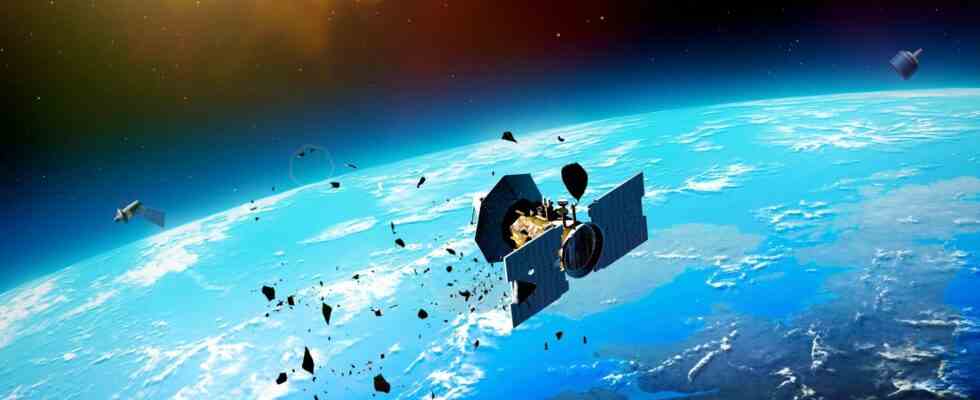Space exploration could face a difficult few years. At least that’s what ESA scientists fear. Since the end of last year, they have been observing that the satellites in low-Earth orbit are sinking towards the atmosphere ten times as fast as usual. Unexpected solar weathermore precisely a new entering solar cycle, occurred at about the same time.
Solar cycle could affect space in orbit
Like Space.com reported, the team on ESA’s Swarm satellite mission noticed a change in December 2021. The satellites in Earth orbit, which measure the magnetic field, began drifting at an unusually high speed. As the phenomenon coincided with the advent of a new solar cycle, problems are expected to increase in the coming years.
“In the past five or six years, the satellites have been sinking by around 2.5 kilometers a year. But as of December last year, they’ve been practically disappearing. The sink rate between December and April was 20 kilometers per year.”
Anja Stromme, Manager ESA Swarm satellite mission
It is not uncommon for the satellites to move toward the planet. They are attracted to the atmosphere, slowed down by it, and then fall back to earth. They usually burn up when they enter the atmosphere.
What is known, however, is that the intensity of this attraction depends on the solar weather and the activity of the sun. While the last solar cycle, which ended at the end of December 2019, was relatively quiet, the new one is clearly noticeable. More and more solar winds and sunspots appear, as well as solar flares and coronal mass ejections.
ESA’s Swarm satellites struggle with current conditions
The rescue operation that became necessary for two of the ESA satellites shows how strong the influence is. Their situation was so precarious in May that the researchers had to increase the flight altitude by controlling the drives on board in order to save them.
In total, the Swarm constellation consists of three satellites launched in 2013. The two mentioned are at an altitude of 430 kilometers, i.e. around 30 kilometers above the International Space Station (ISS). A third specimen orbits the earth a little further up, at a distance of around 515 kilometers. It is less affected by the effects of solar weather and the solar cycle than the other satellites, Stromme said.
Sources: Space.com
War has been raging in Ukraine since February 24, 2022. here Can you help those affected?

